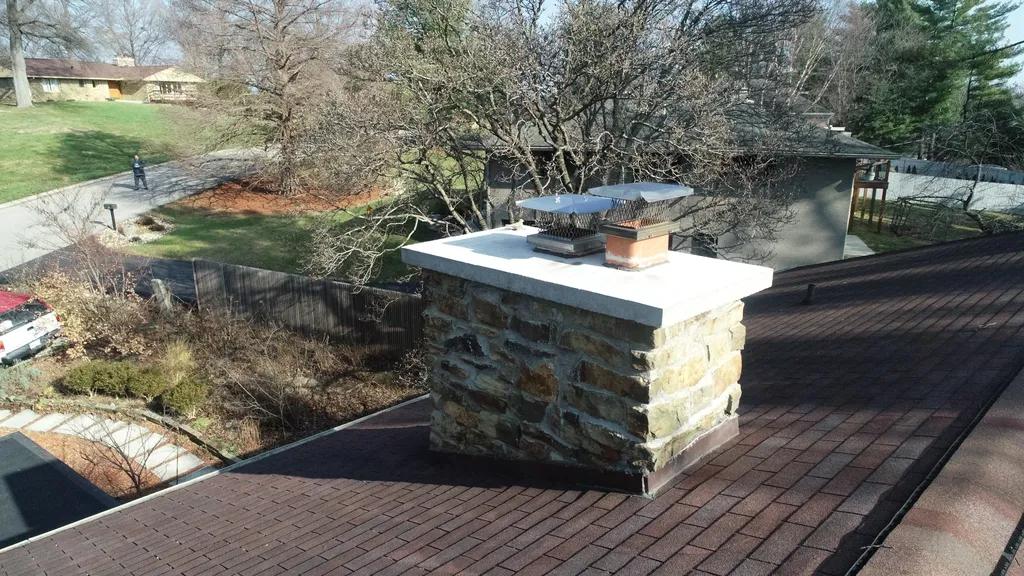A well-maintained chimney is essential for ensuring the safety and efficiency of your fireplace or wood-burning stove. Over time, chimneys can develop a variety of common issues that require prompt attention to prevent more serious damage. In this article, we will provide you with an essential guide to the most common chimney repairs, including how to identify them and the steps you can take to address them effectively. By understanding and addressing these issues promptly, you can ensure that your chimney continues to function properly and safely for years to come.
Table of Contents
- Common Chimney Problems to Look Out For
- Understanding the Importance of Regular Chimney Maintenance
- Professional Tips for DIY Chimney Repairs
- Hiring a Certified Chimney Sweep: When to Call in the Pros
- Q&A
- Concluding Remarks

Common Chimney Problems to Look Out For
One common chimney problem to be aware of is creosote buildup. Creosote is a black, tar-like substance that accumulates on the walls of the chimney when wood is burned. This buildup can restrict airflow and increase the risk of a chimney fire. Regular chimney inspections and cleanings can help prevent creosote buildup and keep your chimney functioning properly.
Another common issue with chimneys is chimney leaks. Water can enter the chimney through cracks in the masonry, damaged chimney caps, or deteriorating flashing. These leaks can cause water damage to your home and affect the structural integrity of the chimney. It is important to address chimney leaks promptly to prevent further damage and ensure the safety of your chimney.

Understanding the Importance of Regular Chimney Maintenance
Regular chimney maintenance is crucial for ensuring the safety and functionality of your home’s fireplace. Over time, debris like soot and creosote can build up in the chimney, increasing the risk of chimney fires. By scheduling annual chimney inspections and cleanings, you can prevent these potential hazards and keep your chimney in top condition.
During regular chimney maintenance, trained professionals can also identify and address common chimney repairs. These repairs may include fixing cracks in the chimney liner, repairing damaged mortar joints, or replacing a faulty chimney cap. By addressing these issues promptly, you can avoid costly repairs down the line and extend the lifespan of your chimney.

Professional Tips for DIY Chimney Repairs
When it comes to DIY chimney repairs, it’s important to have the right tools and knowledge to tackle the job effectively. One common issue that homeowners may encounter is a damaged chimney cap. To fix this, start by removing the old cap and checking for any underlying damage to the chimney structure. Then, install a new chimney cap securely to prevent water and debris from entering the flue.
Another common chimney repair task is repointing the mortar joints between the bricks. Over time, the mortar can deteriorate, leading to cracks and gaps that allow water to seep in. To fix this, carefully remove the old mortar using a chisel and brush, then apply fresh mortar in a crisscross pattern to ensure a strong bond. Remember to let the mortar cure properly before using the fireplace again.

Hiring a Certified Chimney Sweep: When to Call in the Pros
When it comes to chimney maintenance, it’s important to know when to call in the professionals. One key indicator that it’s time to hire a certified chimney sweep is when you notice a buildup of soot or creosote in your chimney. These substances can pose a serious fire hazard if not removed properly. A chimney sweep has the expertise and tools necessary to safely clean your chimney and prevent potential disasters.
Another sign that you need to bring in the pros is if you notice any cracks or damage to your chimney. These issues can compromise the structural integrity of your chimney and may require repairs from a skilled technician. By addressing these problems promptly, you can ensure the safety and efficiency of your chimney for years to come.
Q&A
Q: What are some common chimney repairs that homeowners should be aware of?
A: Some common chimney repairs include fixing mortar joints, repairing or replacing chimney caps, addressing water leakage issues, and repairing or replacing damaged flue liners.
Q: How can I tell if my chimney needs repairs?
A: Signs that your chimney may need repairs include crumbling mortar, visible cracks in the chimney structure, water stains or leaks in the interior of your home near the chimney, or a damaged chimney cap.
Q: Can I repair my chimney myself, or should I hire a professional?
A: While some minor chimney repairs can be done by homeowners, it is important to hire a professional chimney inspector or repair technician for more complex repairs to ensure the safety and proper functioning of the chimney.
Q: How often should I have my chimney inspected for potential repairs?
A: It is recommended to have your chimney inspected at least once a year by a certified chimney sweep to check for any potential repairs or issues that need to be addressed.
Q: What are the consequences of neglecting chimney repairs?
A: Neglecting chimney repairs can lead to chimney fires, carbon monoxide poisoning, water damage to your home, and decreased efficiency of your chimney, resulting in higher energy costs. It is important to address chimney repairs promptly to prevent these potential hazards.
Concluding Remarks
In conclusion, understanding the common chimney repairs and maintenance tasks can help ensure the safety and functionality of your chimney. By regularly inspecting and addressing necessary repairs, you can prevent potential hazards and extend the lifespan of your chimney. Remember to always hire a professional chimney expert for any repairs beyond your capabilities. Stay informed and proactive to keep your chimney in top condition. Thank you for reading our essential guide to common chimney repairs.


